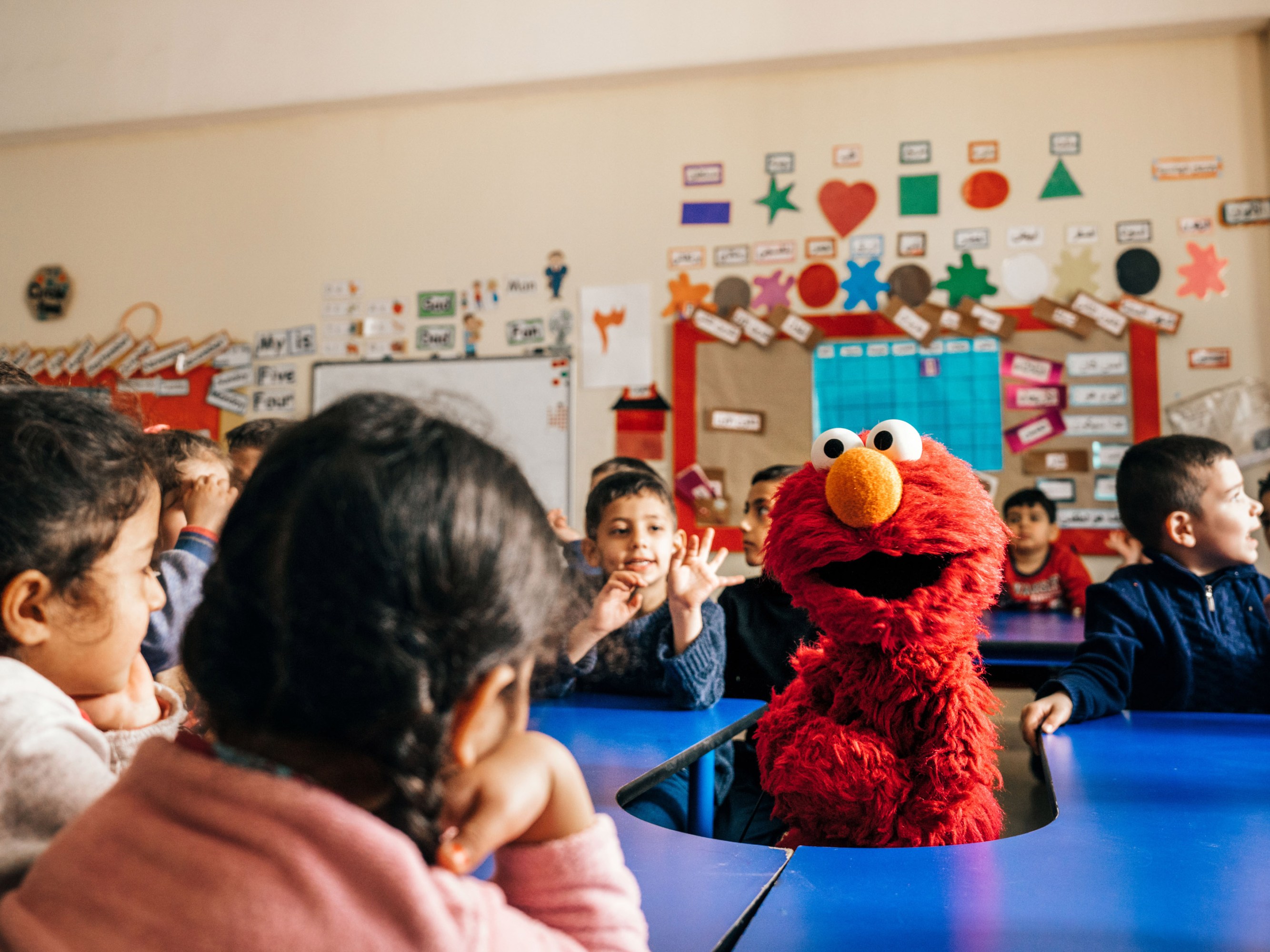Mariam, one of the mothers in the camp, has two girls, five and four years old, and her greatest wish is that they get an education. She herself stopped her schooling at the sixth grade. “Reading and writing,” she said through an interpreter, “is the most important thing in life.”
A focus on resilience
Sesame Street premiered in the United States in 1969 with a social mission born out of the civil rights movement and President Lyndon Johnson’s Great Society: to level the playing field for poor kids by bringing early learning into the home for free.
The show debuted its first foreign-language co-productions in Brazil and Mexico just three years later; there have been a total of 42 international co-productions over the years. A meta-analysis of studies with over 10,000 children in 15 countries found that these programs have had significant positive effects on children’s mastery of reading and basic math concepts, as well as their social-emotional skills and attitudes toward out-groups.
An Arabic version of the show (Iftah Ya Simsim/Open Sesame, which many of today’s parents in the region grew up with) ran from 1979 to 1989. But Ahlan Simsim is the first production created deliberately for children affected by crisis and conflict, and that necessitated some special sensitivity.
The social-emotional curriculum for the show had to be designed from scratch for the cultural context and needs of these children, says Shanna Kohn, the director of international education at Sesame Workshop. “We went in with the idea of a show that focused on resilience—a beloved Western concept. And we brought that to this team of academics and Arab advisors, and there was a lot of skepticism. There isn’t even a clear Arabic translation,” says Kohn.
So the team backed up and started with the basics. They had to figure out how to present relatable stories—about Jad leaving home and feeling different from his friends—without introducing situations or concepts that might be triggering for young viewers.

RYAN HEFFERNAN/SESAME WORKSHOP
“Boats are usually a go-to for preschool children,” says Scott Cameron, who has been with the company for 25 years. “We avoided things like that, for obvious reasons.” They also avoided loud noises, like thunderstorms. They skipped nutrition lessons, because kids who are barely getting enough to eat can’t use reminders about fruits and vegetables.
Kids who are traumatized often respond with an outward numbness; the research team found that the children were using only two or three terms—happy, sad, angry—to describe their feelings. To help them process these feelings and frustrations, the show defines the Arabic words for nine emotions: caring, fear, frustration, nervousness, hope or determination, jealousy, loneliness, and sadness. Jad and Basma model emotional coping strategies: belly breathing, counting to five, “moving it out,” “drawing it out,” asking for help, and making a plan.




